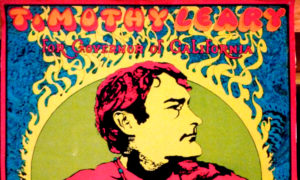 A lab technician’s slip-up five decades ago could cause a complete rethink of cannabis and CBD regulation in many jurisdictions, legal scholars warned today as details of the error came to light.
A lab technician’s slip-up five decades ago could cause a complete rethink of cannabis and CBD regulation in many jurisdictions, legal scholars warned today as details of the error came to light.
The inadvertent transposition of findings relating to the two substances in records of experiments conducted at Stanford University, California in 1971 was discovered by lawyers working for the Leary, Grinspoon & Chong firm as they prepared a case challenging the US Drug Enforcement Administration (DEA) over its classification of cannabis.
“The scientists back in ’71 were conducting a series of studies on pangolins and bats to determine two things about THC and CBD,” said the law firm’s Sam Taylor Coleridge. “They were looking to figure out whether either substance was psychoactive, and if not, whether it could be used to treat a range of common conditions including anxiety and epilepsy as well as making people feel generally organic and holistic in a kind of undefined but not inexpensive way.
Groovy, man
“Their scientific rigour couldn’t be faulted. But unfortunately a grad student helping out as a lab technician, a guy by the name of Rolf Palio, noted down the CBD results in the THC column and vice-versa.”
As a result, according to Coleridge, the assumption that THC is psychoactive while CBD is not – the foundation of most countries’ regulatory regime for cannabinoids – needs to be thrown out the window, much as Palio shortly afterward threw himself from a window on Ashbury Street, San Francisco, believing he could fly while under the influence of a full-spectrum soothing balm.
The DEA has commissioned an urgent follow-up study, which begins today, 1st April. Among the questions it will seek to answer is whether the confusion of test results for CBD and THC explains why so many cannabis users are pretty laid-back while so many CBD users are mildly obsessive.
What This Means: While the Leary, Grinspoon & Chong discovery could easily result in CBD being moved to the DEA’s Schedule 1, the outlook for the cannabinoid industry is not entirely negative. Such a move would likely be paralleled by a downgrading of THC, opening up a potential market for marijuana candles and concentrated skunk bird pellets.
– Creedence Santana CBD-Intel non-psychoactive substances correspondent, man
Photo: Flora Haight-Ashbury







